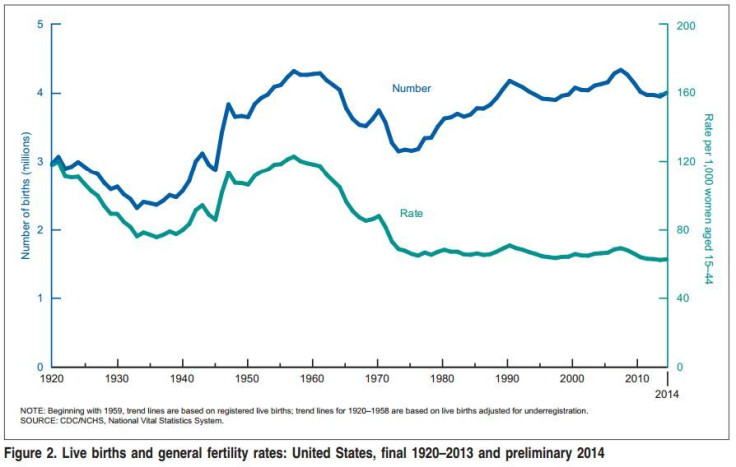US Birth Rate Increases For First Time In Seven Years
For the first time in seven years, American women gave birth to more babies than the year before. An estimated 3,985,924 babies were born in the U.S. last year at a birthrate that was 1 percent higher than the 2013 rate. The modest increase means that 53,743 more babies were born in 2014 than in the previous year, according to new data released by the U.S. Centers for Disease Control and Prevention.
A healthier economy may partly explain the upward trend -- the boost in births means that more babies were born last year than at any time since 2007, when the recession hit.
"I think we need to wait a little bit to see what happens, but you might see this as a good proxy indicator of the strength of the economy if people feel they can start having more children again," Daniel Lichter, director of the Cornell Population Center at Cornell University, says.

So, who is having all these babies? Lichter says married women who are choosing to have their first or second child are driving the recent birthrate increase. Births to unmarried women fell by 1 percent – a trend that has sloped downward for the past six years after peaking in 2008. He says when the economy is strong, more people choose to get married and have children because they are less concerned about losing employment or jeopardizing their financial security.
"People who have put the brakes on childbearing are re-evaluating their decision and making the decision to move forward with another child," Lichter says.
This theory may also explain why women in their 30s and early 40s showed the greatest increase in birth rates over the past two years. Births to women in their 30s increased by 3 percent from 2013 to 2014 and births to women in their early 40s rose by 2 percent over the same period. Women in their early 40s have slowly but steadily had more babies since the 1980s, according to the CDC’s National Center for Health Statistics, which estimates that its report captures data on 99.7 percent of all U.S. births.
But women ages 25-29 still give birth to more babies than any other age group. Last year, these women had 1,144,837 babies – more than a fourth of the total births in the U.S.
Meanwhile, births to teenage mothers dropped to a historic low. The birthrate for teenagers fell by 9 percent to about 24 births for every 1,000 women in 2014. By comparison, the new overall fertility rate is 62.9 births for every 1,000 women between the ages of 15 and 44.
"These are huge, huge declines," Charles Becker, an economist at Duke University, says.
Lichter, who serves on the advisory board of the National Campaign to Prevent Teen and Unintended Pregnancy, credits this decrease to widespread media campaigns and outreach programs that take a more direct approach to talking with teens about safe sex and long-acting birth control methods that are now considered more effective than the pill.
Immigration patterns can also influence birth rates if there is a sudden influx of young people from a particular region, but broad-based growth in fertility like that which occurred last year seems to indicate a rosier economic outlook for everyone. Women of nearly every race had more babies in 2014 than in 2013, except for American Indian or Alaska Native women who had 2 percent fewer births. Asian and Pacific Islander women showed the greatest increase – they had 6 percent more babies in 2014 than in the year prior.
To look ahead to the size of the next generation, the CDC also examines a measure called the total fertility rate. This figure represents the number of babies that a group of women are likely to have over their entire lifetimes. In order for a generation to replace itself, that number must be 2,100 births for every 1,000 women. Overall, the total fertility rate in 2014 was 1,851.5 births for every 1,000 women. That means at the current rate, the next generation will be smaller than the present one.
© Copyright IBTimes 2025. All rights reserved.






















